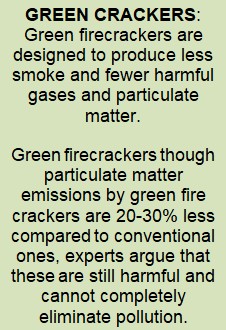SUNDAY, DECEMBER 07, 2025
- Home
- Noise Pollution and Its Effect on Human Health
Noise Pollution and Its Effect on Human Health
Rapid urbanisation and changing lifestyles have led to increase in noise pollution, affecting human health and psychological well being of the people.
Share
The rapid urbanisation and changing lifestyles have given rise to increasing ambient noise levels from various sources which have deleterious effects on human health and the psychological well being of the people. The erratic, flashing and impulsive noise produced by bursting of firecrackers, use of loud speakers/public address system, any sound producing instrument or musical instrument or a sound amplifier and unnecessary honking of horns turns into disharmony of noise. At times, what is music for some can be noise for others.
In order to curb the growing problem of noise pollution, the Government of India has enacted the Noise Pollution (Regulation and Control) Rules 2000 framed under the Environment (Protection) Act, 1986 which provides the regulation for noise.
Noise Pollution from Firecrackers
As festive seasons approaches, use of firecrackers becomes eminent, bringing joy and celebration but without thinking about the consequences of the impact on human health and the environment. Firecrackers not only increase the ambient noise level but also contribute significantly to increasing the air pollution by means of toxic gases and particles due to their blast wave resulting from a rapid release of energy.
With regard to the air pollution, Kohima and Dimapur fall under the non-attainment cities, which means the ambient air quality of both these cities is beyond the permissible limit as per the National Ambient Air Quality Standards (NAAQS).
Firecrackers Effect on Human Health and Environment
The bursting of crackers is primarily responsible for an increase in concentration of dust and pollutants. The fine dust that settles after bursting crackers is rich in pollutants like oxides of sulphur and nitrogen, metal dust and organic pollutants.
· Even the tiny sparklers, torches and flower pots which are otherwise considered to create no noise at all generate thick smoke that can affect the respiratory tract of young children.
· Firecrackers have much more severe effects in people with heart, respiratory or nervous system disorders and also causes throat, nose and eye related problems which can later develop into adverse health issues.
· It can aggravate problems for people suffering from colds, allergies or coughs and can also cause congestion of the throat and chest.
· It can also cause water and soil contamination.
· It results in air pollution that creates carcinogenic.
· The green light produced in fireworks displays comes from barium, which is radioactive and poisonous. The blue colour produced from copper compounds comes from dioxins linked to cancer.

Notification and Regulations on Firecrackers
The Government of India under the Noise (Regulation and Control of Pollution) Rule, 2000 had laid down certain rules in order to regulate noise by bursting of fire crackers which emits noise and gas so that people are least disturbed, such as:
1. The Deputy Commissioner is the authority to implement the said rule.
2. Bursting of crackers during night time i.e. 10:00 PM to 6:00 AM is not permitted.
3. Fire crackers above 125 decibels are banned.
In addition to the above Rules, the Nagaland Pollution Control Board under Section 31 A of the Air (Prevention and Control of Pollution) Act, 1981 and Section 8 of The Noise (Regulation and Control of Pollution) Rule, 2000 directs;
That, if there is to be firework;
1. Prior permission has to be taken from the concerned Administration who shall give permission to carry out the firework specifying the time and place for the purpose (away from the hospitals, schools, residential areas).
2. Wide publicity shall be given prior to the event to avoid panic to the people in the vicinity and to maintain congenial environment, prevent annoyance, disturbance, and discomfort to the public.

Standards in Respect of Noise for Different Areas/Zones
Under the Noise Pollution (Regulation and Control) Rules, 2000 the Ambient Air Quality standards in respect of noise for different areas/zones is given below:
Area Code | Category of Area/Zone | Limits in dB (A) Log | |
Day Time (6a.m. to 10 p.m.) | Night Time (10 p.m. to 6 a.m.) | ||
A | Industrial Area | 75 | 70 |
B | Commercial Area | 65 | 55 |
C | Residential Area | 55 | 45 |
D | Silence Zone | 50 | 40 |
Celebrate Eco-Friendly
Let us celebrate our festivals in an eco-friendly ways and save the environment from pollution, making our environment healthier and cleaner.
Issued in public interest by
Nagaland Pollution Control Board

